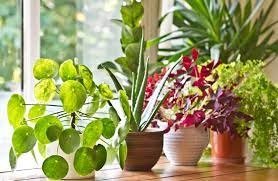For centuries, a ‘Green Prescription’ has been nature’s gift to mankind—a testament to the symbiosis between human health and the plant kingdom. In our ancestors’ footsteps, we rediscover this timeless wisdom, unveiling the profound connections between plants and our own well-being. Let’s embark on an enlightening journey through the verdant world of plant-based healing, uncovering its principles, practices, and potential.
The Basics of Plant-Based Medicine
What exactly do we mean by ‘plant-based medicine’? It is, simply put, the use of plant substances for therapeutic purposes. From the chamomile tea that lulls us to sleep to the echinacea that stands guard against cold, plant-based remedies come in diverse forms. They offer a holistic approach, nurturing not just the physical body but also the mind and spirit. Their benefits span the spectrum of health, offering gentle, yet powerful, healing. Isn’t it intriguing to consider that within a simple leaf or flower lies the potential to mend?
Understanding the Science Behind Plant Healing
The healing powers of plants aren’t just folklore—they’re rooted in science. Plants are rich in phytochemicals, active compounds that have medicinal effects on the body. When we harness these botanicals, we engage in a delicate dance with nature’s pharmacy. It’s a partnership where plants lend us their strength, and in turn, we give them respect by learning how they work within us. The evidence? A growing body of research validates what traditional healers have known all along. It’s this very interplay of compounds and cells that unfolds the story of healing.
Common Plants and Their Healing Properties
Imagine your kitchen shelf as a medicine cabinet. The aloe plant, with its fleshy leaves, soothes burns. A knob of ginger can quiet an upset stomach. The golden dust of turmeric fights inflammation, while lavender’s purple blooms chase away the day’s stress. These are not mere ingredients; they are nature’s healers, available to all who seek their aid. And this is just scratching the surface—countless other plants, often overlooked, hold secrets to longevity and vitality. Have you ever considered how the humble garlic bulb can bolster your immune system, or how peppermint leaves can ease tension headaches?
Cannabis: A Controversial Healer
Amidst the greenery, cannabis stands out—a plant with a complex reputation. Its history is riddled with controversy, yet its medicinal properties are undeniable. Cannabis is rich in cannabinoids like THC and CBD, each interacting with our body’s endocannabinoid system to relieve pain, soothe anxiety, and much more. It’s a plant whose time has come to be understood, not feared. As research progresses, we continue to uncover the layers of benefits offered by this multifaceted herb.
The legal landscape for cannabis is a patchwork quilt of laws and regulations. It varies from place to place, a reflection of the plant’s contested status. Yet, the trend is clear: the world is slowly opening its doors to the medicinal value of cannabis. It is a cautious welcome, one that insists on regulation for the sake of safety and efficacy.
In West Virginia, the Medical Marijuana Program lays out a path for patients to access cannabis legally. A West Virginia medical marijuana card is more than a pass; it’s a bridge between patients and relief, between stigma and acceptance. Holders of this card can avail themselves of cannabis, assured by the state’s seal of quality and compliance. The process to acquire one involves clear steps—consultation, application, and, finally, the embracing of a plant’s healing embrace.
How to Incorporate Plant-Based Medicine in Your Life
Plant-based healing is not a mere substitution for conventional medicine; it’s an integration into a lifestyle of wellness. It starts with awareness and education, understanding the herbs that resonate with your body’s needs. It requires dialogue—with herbalists, with doctors, with a community of fellow green-thumbed healers. Your personal ‘Green Prescription’ could be a mosaic of teas, tinctures, and tonics, each chosen with knowledge and intention. It’s about creating a balance, isn’t it? A balance that respects the power of plants and the wisdom of modern medicine.
The Future of Plant-Based Medicine
The horizon is bright for plant-based medicine. Innovation flourishes alongside tradition, crafting new ways to benefit from nature’s bounty. Public perception is shifting; the seeds of acceptance are germinating into widespread recognition of plant-based medicine’s role. As we look ahead, it is with the hope that the gap between natural and conventional healing will narrow, united by the common goal of holistic health.
The advancements in plant-based medicine also extend to areas such as sustainability and global health. Could we see a future where plants not only heal individuals but also contribute to healing the planet? It is a thought that resonates with the essence of a ‘Green Prescription’: an alignment of personal health with environmental consciousness.
Conclusion
In the tapestry of health and healing, plants are both thread and color, weaving patterns of wellness into the fabric of our lives. A Green Prescription is more than a metaphor; it’s a tangible path to well-being, inviting us to explore and embrace the botanical world’s curative powers. With every leaf and every bloom, we find pieces of the puzzle that are human health, and with care, knowledge, and respect, we put them together to reveal a picture of vitality. The healing powers of plants stand as an invitation to a journey—one of discovery, connection, and, ultimately, harmony with the natural world. It is a journey worth taking, one step at a time, one plant at a time, towards a healthier self within a thriving ecosystem.
